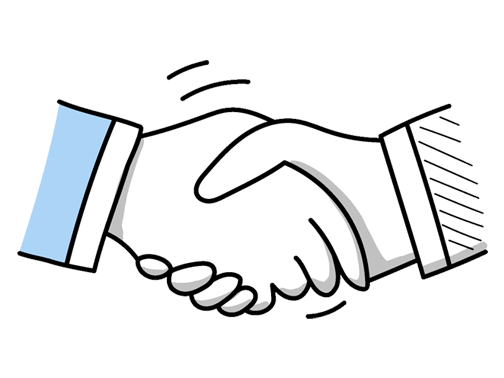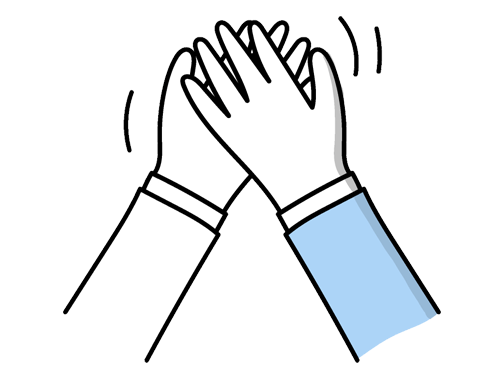Junior Hairdresser Interview Questions (2025 Guide)
Find out common Junior Hairdresser questions, how to answer, and tips for your next job interview
Practice Interviews Online - Identify your strengths and weakness in a realistic Junior Hairdresser mock interview, under 10 minutes
Practice Now »Junior Hairdresser Interview Questions
This question assesses your ability to prioritize tasks, communicate clearly, and remain calm under pressure, all crucial skills in a busy salon. In your answer, explain how you decide which client needs attention first, how you inform clients about wait times, and how you keep organized to deliver quality service without rushing.
Example: When I have several clients waiting, I first assess who needs a quicker turnaround and plan accordingly. I keep everyone informed about how long they might expect to wait, which helps manage their patience. Staying calm is key—I focus on one task at a time, staying organized to make sure each client feels valued and gets the attention they deserve. For example, I’ll start with quicker treatments while prepping for longer ones.
Hiring managers ask this question to see how you handle pressure and unexpected challenges, which are common in a busy salon. You need to describe a specific situation where you acted fast, explain what you did, and show the positive result.
Example: During a busy day at my previous salon, a client arrived late with damaged hair from a home treatment. I quickly assessed the situation, adjusted the appointment plan, and used gentle techniques to restore their hair's condition. This calm, flexible approach ensured the client left happy, and the schedule stayed on track. It taught me the importance of staying composed and adapting quickly to unexpected challenges.
Hiring managers ask this question to see how you handle challenges creatively and provide personalized solutions. You need to briefly describe a specific problem you encountered, explain the unique technique or idea you used to address it, and share the positive result or client feedback you received.
Example: Once, a client came in wanting a textured look but had very fine hair. Instead of the usual layering, I used point cutting combined with light texturizing to add volume without thinning it out. The result was a fuller, dynamic style that delighted the client and boosted their confidence. It felt great finding a simple yet effective way to meet their needs while enhancing their natural hair.
This interview question helps the employer see if you can maintain a positive work environment despite disagreements. You should say that you listen carefully without interrupting, communicate calmly and respectfully, and try to find solutions that work for everyone to keep the team strong.
Example: When conflicts arise, I try to listen carefully to the other person’s point of view without interrupting. Staying calm makes it easier to talk things through and find common ground. For example, if a stylist and I disagreed on scheduling, we discussed our needs openly and adjusted times to suit both, keeping the salon environment positive and cooperative. I believe good communication helps everyone work better together.
This interview question helps the employer understand your practical skills and how you care for clients’ hair during coloring and highlighting. You need to clearly describe specific techniques you’ve used, how you protected hair health, and how you tailored your approach to each client’s preferences.
Example: I’ve worked with basic coloring techniques like balayage and foil highlights, always prioritizing the health of the hair by using nourishing products and precise timing. I listen carefully to what clients want, adjusting shades or intensity to suit their style and hair condition. For example, I once toned down a vibrant color for a client who preferred a softer look while keeping her hair strong and shiny throughout the process.
This question assesses your understanding of hair care and your ability to provide thoughtful, personalized solutions. You need to say that you carefully evaluate the damage, recommend gentle treatments, and ensure the client feels comfortable and informed throughout the process.
Example: When I notice a client’s hair is damaged, I start by gently discussing their hair routine to understand the cause. Then, I recommend treatments like deep conditioning or protein masks, tailored to their needs. I also offer tips for ongoing care, like avoiding heat styling or using nourishing products. It’s about building trust and helping them improve their hair health step by step.
Employers ask this question to understand your passion and motivation for the role, which shows how well you’ll fit and stay committed. You need to say something genuine about enjoying creativity and making clients feel confident.
Example: What I enjoy most about hairdressing is the chance to boost someone’s confidence through a fresh style. It’s rewarding to see a client leave feeling happy and more comfortable in their own skin. I also like the creative side — experimenting with different cuts and colours keeps each day interesting. For example, transforming a simple trim into something personalised always feels fulfilling.
Employers ask this question to see how you handle problems and ensure client satisfaction. You should explain that you assess the issue carefully, check the product and timing used, and communicate clearly with the client to find the best solution.
Example: When I notice a hair coloring issue, I first assess the root cause by checking the client’s hair history and color used. If the tone is off, I might adjust with a toner or a gentle refresh. I always communicate clearly with the client throughout, ensuring they’re happy with each step. For example, once I corrected an uneven shade by blending with a softer color, and the client loved the result.
This interview question helps the employer see how you prioritize client satisfaction and professionalism. You should explain that you listen carefully to understand their needs, communicate clearly about each step, and keep your workspace clean and welcoming.
Example: To make sure every client leaves happy, I start by really tuning into what they want, asking questions to get it just right. I keep the conversation open and friendly throughout, so they feel comfortable and confident. Also, I take care to keep my station neat and inviting — it helps people feel relaxed and enjoy their time in the salon. For example, I once noticed a client seemed unsure, so I reassured her by explaining each step clearly, which made her experience much better.
What they want to know is if you are motivated and have a clear vision for your future in hairdressing. You need to show that you aim to grow your skills and possibly specialize or advance in the industry over time.
Example: In the long term, I hope to grow my skills and eventually take on more creative roles, like styling for events or editorial shoots. I’m excited about learning new techniques and staying updated with trends, with the goal of maybe mentoring others one day. Being part of a team where I can contribute and keep improving is really important to me.
Questions like this assess your technical knowledge and understanding of various hair cutting methods; the interviewer wants to see that you can apply the right technique for different styles. You need to mention techniques like layering, point cutting, and blunt cutting, explaining briefly when and why you would use each.
Example: I’m familiar with a variety of hair cutting techniques such as layering to add texture and movement, point cutting for softer edges, and blunt cutting for a clean, sharp finish. I’ve also practiced texturizing to remove bulk and create a lighter feel. These methods help tailor styles to suit different hair types and client preferences, ensuring a personalized and polished result every time.
Questions like this assess your ability to manage customer dissatisfaction professionally and effectively. You should say that you listen carefully to the client's concerns without interrupting, remain calm and patient, and offer a constructive solution to fix the haircut.
Example: If a client isn’t happy with their haircut, I first listen closely to understand exactly what’s bothering them. I stay calm and positive, showing I care about making it right. Then, I suggest ways we can adjust the style or fix any issues. For example, if a fringe is uneven, I’d offer to tidy it up so they leave feeling confident and satisfied.
This question checks if you understand the importance of hygiene in preventing infections and maintaining a professional environment. You need to say that you regularly clean and disinfect your tools and workspace after each client, following salon protocols to keep everything safe and sanitary.
Example: I always make sure to clean my tools thoroughly after each client, using the proper disinfectants recommended in the salon. I keep my workspace tidy throughout the day, wiping down surfaces regularly to maintain hygiene. For example, I sterilise combs and scissors in an autoclave or chemical solution, which helps prevent any risk of infection and keeps everything safe and professional.
Employers ask this question to see how well you work with others and contribute to a team, which is crucial in a busy salon. You should say you collaborate by assisting senior stylists and communicating clearly, showing you’re supportive and respectful in achieving great results together.
Example: In a team, I’m someone who listens carefully and supports wherever needed, whether that’s helping a colleague with a tricky style or keeping the workspace organised. I believe good communication is key, so I make sure to check in with others and share ideas openly. For example, during my training, I often collaborated with others to ensure clients left happy and the day ran smoothly.
Employers ask this question to see how you stay calm and positive under pressure, which is crucial in a busy salon. You should say that you use techniques like deep breathing and short breaks, stay organized by planning your tasks, and keep a friendly attitude by encouraging clients and coworkers.
Example: When things get busy, I focus on staying calm by breaking tasks into smaller steps and keeping my workspace tidy. This helps me stay on top of things without feeling overwhelmed. I always remind myself to stay friendly and approachable, whether with clients or the team, as a positive vibe makes a big difference. Taking short moments to breathe deeply also helps me reset and keep a clear mind throughout the day.
Hiring managers ask this to understand your passion and commitment to the career. You need to explain what drew you to hairdressing and show genuine enthusiasm for helping others look and feel their best.
Example: I’ve always enjoyed working with people and being creative. Growing up, I watched family members experiment with hairstyles, and I loved how a simple change could boost someone’s confidence. Starting to practice on friends and seeing their smiles made me realise this is a craft I want to develop professionally. It’s rewarding to help people feel their best through something as personal as their hair.
Interviewers ask this question to see if you are willing to provide excellent customer service and take initiative beyond your basic duties. In your answer, describe a specific time you did more than expected for a client, explain what you did, and share the positive result, like a happy or returning customer.
Example: Sure! Here’s a natural, concise response you could use:
There was a client preparing for a special event who wasn’t sure what style suited them. I spent extra time listening to their ideas, offering suggestions, and carefully tailoring the cut to boost their confidence. They left really happy and even recommended me to friends, which felt rewarding. It’s great to see how a little extra care can make a big difference.
What they want to see is that you can work well with others to achieve a common goal by communicating clearly, supporting your team, and solving problems together. You should share a specific example where you helped your team, explained your ideas, and worked through a challenge to deliver great service.
Example: In a previous role, our team faced a busy weekend with many appointments. I made sure to communicate clearly with colleagues about scheduling and helped where needed, whether by prepping stations or assisting clients. When a last-minute cancellation happened, we quickly reorganised to keep things running smoothly. Working together like that taught me how much can be achieved when everyone supports each other and stays flexible.
Hiring managers ask this to see if you can work well in a team under pressure. In your answer, explain how you communicate clearly about appointments, offer to help with tasks like cleaning or prepping stations, and stay positive to support your colleagues during busy times.
Example: During busy periods, I stay attentive to what my team needs and offer help wherever I can, whether that’s tidying up stations or preparing products. I keep communication open so everyone knows what’s happening, which helps us stay organised and calm. For example, if a colleague is running behind on appointments, I’ll step in to assist with washing hair or setting up tools to keep things moving smoothly.
Questions like this assess your commitment to professional growth and your passion for staying current in a fast-evolving industry. You need to say that you regularly follow industry magazines, attend workshops or webinars, and learn from experienced colleagues to keep your skills fresh and relevant.
Example: I keep up with new trends by regularly following industry magazines and popular hairdressers on social media. I also enjoy watching tutorial videos to learn fresh techniques. Whenever possible, I attend local workshops or salon events to see styles in person and ask questions. This way, I stay inspired and ready to offer clients the latest looks that suit them best.
Employers ask this question to see if you can work well in a team and avoid misunderstandings. You need to say that you listen carefully, ask questions when unclear, and share important information clearly and respectfully.
Example: I focus on being clear and approachable, whether it’s checking in during busy times or sharing tips I’ve picked up. I make sure to listen carefully to colleagues’ ideas and concerns, which helps us work smoothly together. For example, when a new product arrived, I asked questions and shared feedback to ensure everyone was comfortable using it. Keeping communication open really helps the whole team stay connected.
Questions like this test your practical skills and understanding of fundamental techniques to ensure you can deliver a quality haircut safely and professionally. You need to explain the key steps clearly, focusing on preparation, sectioning, cutting techniques, and checking for evenness.
Example: Of course. I’d start by consulting with the client to understand their desired style. Then, I’d section the hair carefully to ensure even cutting. Using sharp scissors, I’d trim small amounts at a time, checking the balance as I go. For example, when trimming a bob, I’d focus on clean, straight lines and regularly cross-check the lengths to maintain symmetry. Communication and attention to detail are key throughout.
Interviewers ask this to see if you can stay calm and professional under pressure while meeting client needs. You should say that you listen carefully to understand their concerns, calmly explain possible solutions, and keep a positive attitude to resolve any issues smoothly.
Example: When a client is challenging, I stay calm and listen carefully to what they’re saying to fully understand their concerns. I always try to explain what’s possible clearly and offer options that suit their needs. For example, if someone isn’t happy with a style, I suggest small adjustments that can make a difference, keeping the conversation positive and professional throughout.
Employers ask this to see if you can stay focused and positive during long shifts, which shows your professionalism and passion for the job. You need to explain how you keep your energy up with habits like taking short breaks or staying hydrated, and share what motivates you about hairdressing, such as helping clients feel confident or staying calm under pressure.
Example: I stay motivated during long days by reminding myself why I love this job—transforming how someone feels through their hair. When it gets tiring, I focus on each client’s unique story, which keeps things fresh and rewarding. Taking short moments to reset, like a quick stretch or deep breath, also helps me keep energy up and stay positive throughout the shift.
Hiring managers ask this to see if you can stay calm and adaptable under pressure. You need to say that you prioritize tasks, stay calm, and communicate clearly to solve problems efficiently.
Example: When unexpected challenges pop up during a busy day, I stay calm and focus on finding quick solutions. For example, if a product runs out, I’ll suggest a close alternative to keep things moving smoothly. I also communicate clearly with clients and colleagues to manage expectations and keep the atmosphere positive. It’s about staying flexible and keeping a steady pace, no matter what comes up.
Ace your next Junior Hairdresser interview with even more questions and answers
Common Interview Questions To Expect
The interviewer is looking for you to highlight your key skills and qualities that make you a strong candidate for the role. You can answer by discussing your technical skills, personal attributes, or relevant experiences.
Example: My biggest strengths are my creativity, attention to detail, and ability to work well under pressure. I love coming up with new hairstyles and color combinations for my clients, and I always make sure to pay close attention to their preferences. Even during busy days in the salon, I stay calm and focused to provide the best service possible.
The interviewer is looking for insight into your long-term aspirations and how they align with the company's goals. Be honest, specific, and show ambition.
Example: My career goal is to become a senior stylist at a reputable salon where I can continue to grow and develop my skills. I am passionate about hairdressing and want to eventually become a mentor to junior stylists. I believe that by setting clear goals and working hard, I can achieve success in this industry.
Interviewers are looking for honesty, professionalism, and a positive attitude in your response. Be prepared to explain any reasons for leaving your previous job in a respectful and constructive manner.
Example: I left my last job because I was looking for new opportunities to grow and develop my skills as a hairdresser. I enjoyed my time there, but I felt it was time for a change and to challenge myself in a new environment. I am excited about the possibility of bringing my experience and passion for hairdressing to your team.
The interviewer is looking for honesty, self-awareness, and a clear explanation of the reasons behind the career change. Possible answers could include seeking new challenges, passion for the new industry, or personal growth.
Example: I decided to change career paths because I wanted to pursue my passion for hairdressing and creativity. I was looking for new challenges and opportunities for personal growth in a different industry. I am excited to bring my skills and enthusiasm to the world of hairdressing.
The interviewer is looking for your commitment to learning and growing in your career. You can answer by mentioning courses, workshops, or certifications you plan to pursue, or by discussing your long-term career goals.
Example: I'm really excited to continue learning and growing in my career as a hairdresser. I plan on taking some advanced cutting and coloring courses to further develop my skills. Ultimately, I hope to become a senior stylist and maybe even open my own salon one day.
Company Research Tips
The company's website is a goldmine of information. Look for details about the company's history, mission, and values. Pay special attention to the 'About Us' and 'Services' sections. For a Junior Hairdresser role, understanding the types of services offered, the company's approach to customer service, and any unique selling points is crucial. This will help you tailor your responses to show how you can contribute to the company's goals.
Tip: Look for any blogs or articles related to hairdressing on the website. This can give you insights into the latest trends and techniques the company values.
Social media platforms like Instagram, Facebook, and Twitter can provide insights into the company's culture, style, and customer engagement. For a hairdressing role, Instagram can be particularly useful to understand the styles and techniques the salon prefers. You can also see how they interact with their customers and the feedback they receive.
Tip: Pay attention to the comments and reviews on their posts. This can give you an idea of what customers like about the company and areas where they might be looking to improve.
Understanding the company's position in the market can be beneficial. Research their main competitors in the UK and compare their services, prices, and customer reviews. This can help you understand what sets your potential employer apart and how they could improve.
Tip: Use websites like Yelp or Google Reviews to get a sense of how the company compares to its competitors in terms of customer satisfaction.
Stay updated with the latest trends in the hairdressing industry. This includes popular hairstyles, cutting techniques, colouring trends, and hair care products. Demonstrating your knowledge of these trends during the interview can show your passion for the industry and your ability to keep up with changes.
Tip: Follow industry influencers and professional hairdressing associations on social media to stay informed about the latest trends.
Curveball Questions
How to respond to the silly questions where there's no right answer.
This question assesses creativity and critical thinking skills. Common answers include figures like Albert Einstein, Leonardo da Vinci, or Amelia Earhart. An answer that provides a unique perspective or insight into the historical figure chosen.
Example: If I could have dinner with any historical figure, I would choose Frida Kahlo. I admire her resilience and creativity in the face of adversity, and I would love to hear about her experiences as a groundbreaking artist.
This question evaluates imagination and problem-solving abilities. Common answers include superpowers like flying, invisibility, or super strength. An answer that ties the superpower to a specific skill or quality relevant to the job.
Example: If I were a superhero, my superpower would be the ability to instantly style hair in any way imaginable. This would allow me to create unique and stunning looks for my clients with ease.
This question assesses personal preferences and creativity. Common answers include popular songs or songs with sentimental value. An answer that explains the emotional connection to the song chosen.
Example: If I could only listen to one song for the rest of my life, it would be 'Bohemian Rhapsody' by Queen. The song's dynamic range and powerful vocals never fail to inspire me, and I could listen to it on repeat for hours.
This question evaluates creativity and problem-solving skills. Common answers include universes from popular books, movies, or TV shows. An answer that explains how the chosen universe aligns with the candidate's values or interests.
Example: If I could live in any fictional universe, I would choose the world of Harry Potter. I've always been fascinated by the magic and creativity of that universe, and I would love to attend Hogwarts and learn from the best wizards and witches.
This question assesses creativity and problem-solving abilities. Common answers include loyal animals like dogs or intelligent animals like dolphins. An answer that explains how the chosen animal complements the candidate's personality or skills.
Example: If I could have any animal as a sidekick, I would choose a chameleon. Their ability to adapt to any situation and blend in seamlessly would be incredibly useful in a fast-paced and ever-changing environment like a hair salon.
What to wear to an Junior Hairdresser interview
- Opt for smart casual attire
- Avoid overly bright or flashy colours
- Ensure clothes are clean and well-pressed
- Choose comfortable, professional shoes
- Keep jewellery and accessories minimal
- Maintain neat, clean, and styled hair
- Opt for a natural, clean makeup look
- Avoid strong perfumes or colognes
- Ensure nails are clean and manicured
- Carry a professional-looking bag or portfolio





